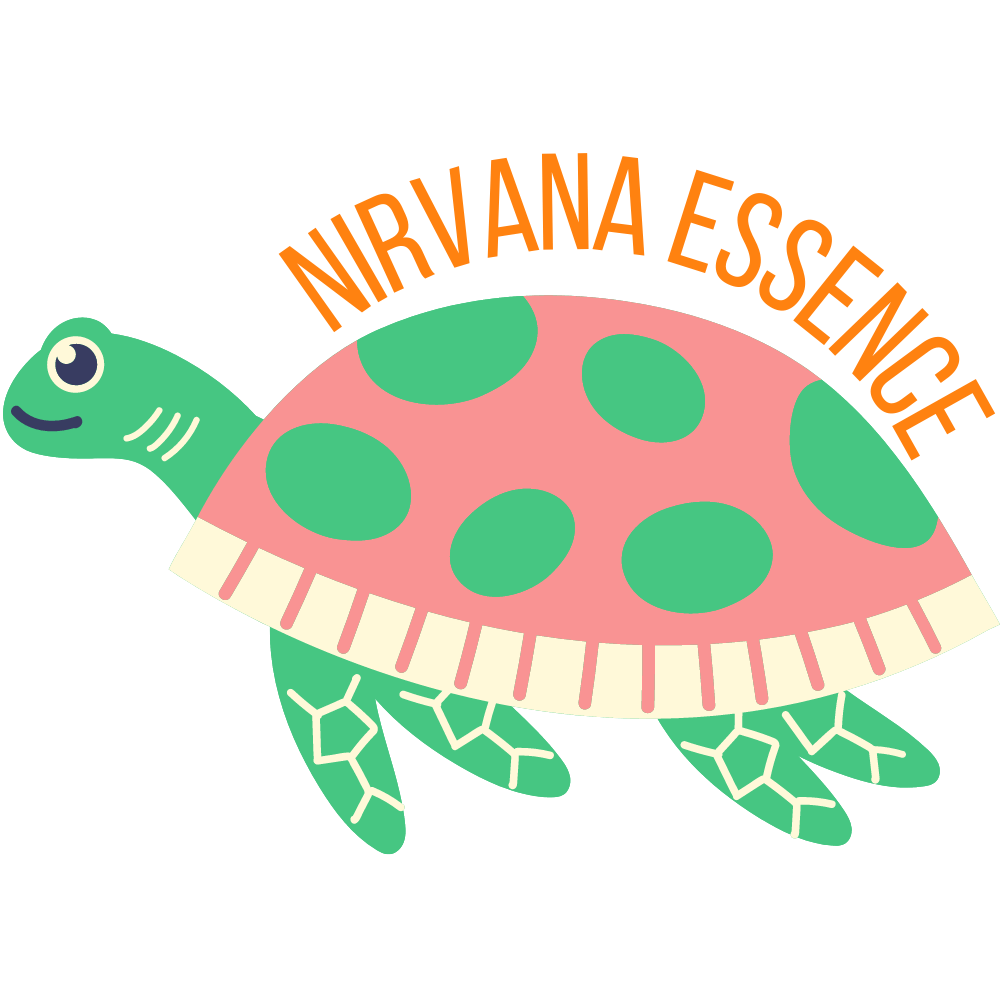Yoga, an ancient practice rooted in Indian philosophy, is much more than a series of postures and breathing techniques. It is a complete mind-body experience that people worldwide have embraced for its profound physical and mental benefits. If you’re new to yoga or want to deepen your understanding and commitment to the practice, this comprehensive guide will provide everything you need to know.
Introduction to Yoga
Originating thousands of years ago, yoga’s central tenet lies in creating balance in the body through developing strength and flexibility. This is achieved by performing a sequence of postures or asanas on a yoga mat, each of which has specific physical benefits. The postures are typically linked with the breath, forming a harmonious flow that can bring about a deep sense of mindfulness. This practice can take many forms, with types of yoga varying from the physically challenging Ashtanga to the meditative and spiritual Kundalini Yoga.
Yoga philosophy is a rich and profound exploration of the mind, body, and spirit. At its heart lies the Yoga Sutra, a text composed around two thousand years ago by the Indian sage Patanjali. This essential part of yoga philosophy teaches how to control the fluctuations of the mind and reach a state of inner peace, an aspect integral to every yoga session.
Yoga is as good for the mind as it is for the body. The act of practicing yoga helps improve body awareness and promote a sense of calm. It’s said that yoga seems to be particularly effective at promoting mindfulness and reducing stress. As such, many yoga teachers advocate that the most profound benefits come from the peace and mindfulness that it brings.
Indeed, there’s a reason why yoga has been shown to stand the test of time. The yogic practice draws from a rich tapestry of wisdom, handed down from countless generations of yogis, and continues to evolve today.To better understand yoga’s origins and its philosophy, you can find more information here.
Yoga focuses not only on the physical poses or “asanas,” but also on the breath, known as “pranayama” in Sanskrit. This critical link between breath and movement lies at the heart of many yoga styles, providing a moving meditation that offers practitioners a respite from the hectic pace of daily life.
Depending on the class, you may also be introduced to elements of classical yoga, such as ethical disciplines, meditation, and spiritual reflection. From Kundalini yoga, which involves specific breathing exercises and mantras, to Hatha yoga, which focuses on basic yoga postures and breath control, there’s a yoga style to suit everyone’s needs.
It’s also worth mentioning that you don’t need to be a contortionist or an acrobat to practice yoga! In fact, yoga is for everyone, regardless of age, body type, or fitness level. Many yoga classes, particularly those designated as gentle yoga or beginner’s classes, are accessible to all, with the use of props such as blocks or straps to accommodate different abilities and body types.
Unveiling the Benefits of Yoga
The Physical Health Benefits of Yoga
When people think of yoga, the physical benefits often come to mind first. Practicing yoga poses can help improve strength, flexibility, and balance. For example, certain poses target specific areas of the body, helping to build strength in the legs or strengthen the back muscles. Yoga may also help manage and improve several health conditions, such as arthritis and high blood pressure.
Research conducted by the National Institutes of Health found that practicing yoga improved physical functions in seniors and reduced the risk of falls. Also, people who practice yoga regularly tend to have lower body mass indexes and better cardiovascular health. According to the American College of Physicians, yoga is generally recommended as an effective approach to managing chronic low back pain.
A regular yoga practice can significantly enhance physical fitness. Yoga students often find that they gain improved flexibility, strength, and balance. For example, standing poses lengthen and tone the leg muscles, while seated poses can benefit the hips and lower back. A study by the National Institutes of Health found that a regular yoga practice improved balance and mobility in older adults.
Yoga has also been found to be beneficial for specific health conditions. For example, a study by the University of Pennsylvania found that yoga improved physical function and reduced pain in participants with osteoarthritis of the knee. Other research has indicated that yoga may help manage high blood pressure, heart disease, and chronic obstructive pulmonary disease.
The Mental Health Benefits of Yoga
Yoga also has numerous mental health benefits. The mindfulness inherent in a yoga session can help reduce stress, anxiety, and even alleviate symptoms of depression. Yoga philosophy teaches practitioners to focus on the present moment, thus improving their overall mental well-being.
For instance, a study by the Boston University School of Medicine found that yoga helped reduce levels of the stress hormone cortisol. The practice can become an integral part of a holistic mental health treatment plan when used in combination with other treatments.
In a world where stress and anxiety are all too common, yoga offers a much-needed sanctuary for mental relaxation and well-being. Through mindful breathing and a focus on the present moment, yoga helps quiet the mind and reduce stress, promoting mental clarity and calm.
Studies show that yoga can decrease the secretion of cortisol, the primary stress hormone, which can have a beneficial effect on mental health. Moreover, yoga may help reduce anxiety and promote a more positive mood. For example, a study in the Journal of Clinical Psychology found that yoga helped reduce anxiety and improve mood in participants with post-traumatic stress disorder.
Regular practice of yoga not only offers immediate benefits but also plays a significant role in maintaining long-term mental health. Research has indicated that yoga can help manage mental health conditions like depression, insomnia, and anxiety. It is always advised to consult with a healthcare provider or a registered yoga therapist before starting yoga as part of a mental health management program.
The mental benefits of yoga extend beyond stress reduction. The practice of mindfulness, so intrinsic to yoga, helps improve focus and concentration. A study published in the journal “Mindfulness” found that even a single 20-minute session of Hatha yoga improved participants’ speed and accuracy on tests of working memory and inhibitory control, two measures of brain function associated with the ability to maintain focus and take in, retain, and use new information.
In the next section, we will delve deeper into the different types of yoga and how to choose the right one for your unique needs and goals.
The Many Styles of Yoga
From gentle and restorative practices to vigorous and challenging sequences, there are many styles of yoga designed to meet a variety of needs. Understanding the different types of yoga can help you select the style that best aligns with your fitness level, goals, and interests.
Hatha Yoga
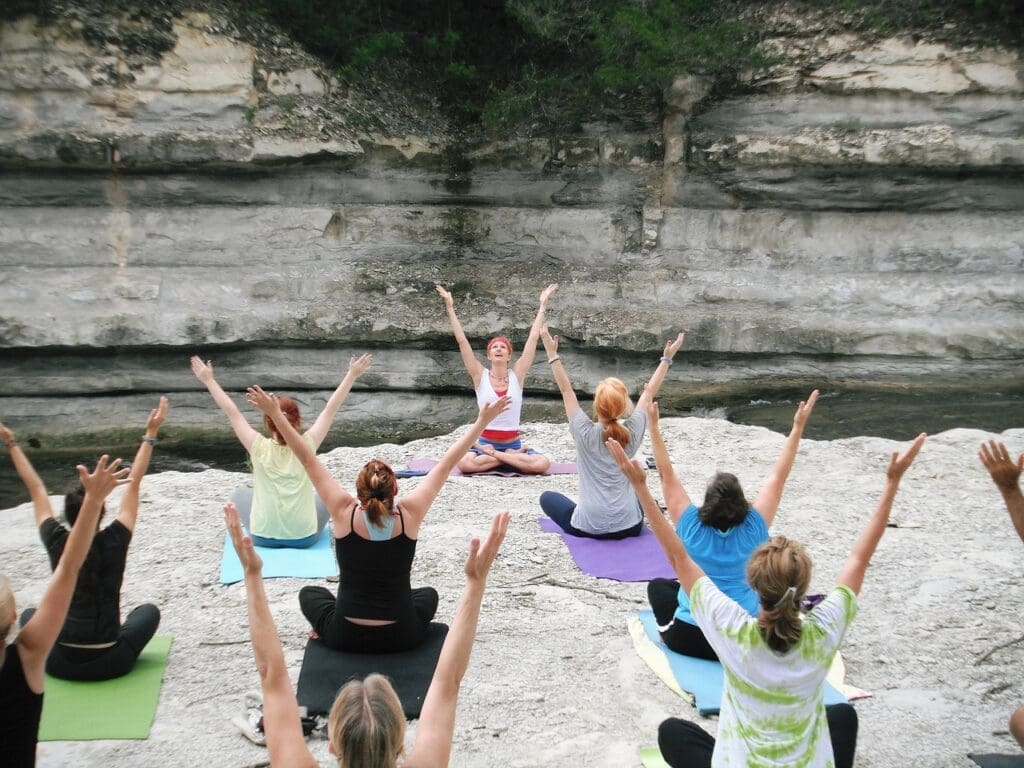
Hatha yoga is often recommended for beginners due to its slower pace. It focuses on basic yoga postures and correct alignment, making it an excellent foundation for any yoga practice. A typical Hatha yoga class includes a variety of asanas (poses), pranayama (breathing exercises), and a period of relaxation at the end of the class.
Ashtanga Yoga
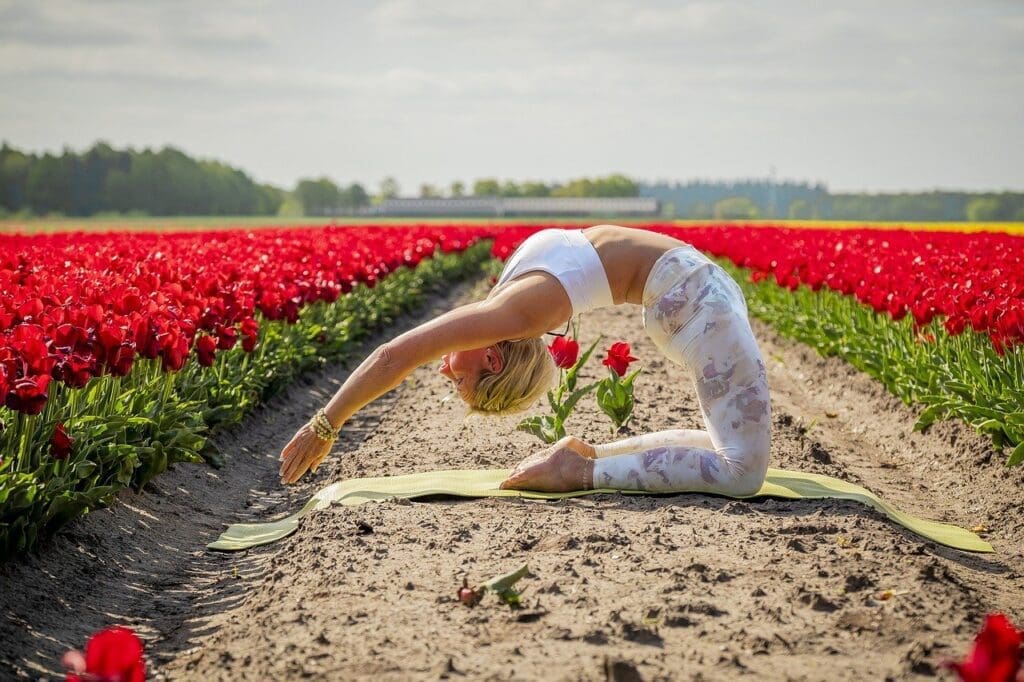
Ashtanga yoga is a more vigorous style of yoga that links breath with movement in a specific series of poses. It is excellent for building strength and endurance. Ashtanga yoga is a physically demanding practice, so it’s usually more suited for those with an established level of fitness or those who enjoy a more dynamic and challenging workout.
Kundalini Yoga

Kundalini yoga is a spiritually-focused yoga practice that combines postures, breathwork, mantra chanting, and meditation. It aims to awaken the “Kundalini” energy at the base of the spine and draw it upward through the seven chakras (energy centers). Kundalini yoga is often described as a more spiritual practice that promotes self-awareness and inner peace.
Restorative Yoga
Restorative yoga is a relaxing and soothing style of yoga that utilizes props like bolsters, blankets, and yoga blocks to fully support the body in each pose, allowing for complete relaxation and release. It’s an excellent style for those looking to reduce stress and anxiety or for individuals recovering from injuries.
How to Choose the Right Style for You
Choosing the right yoga style depends on what you want to get out of your yoga practice. If you’re seeking to improve flexibility and strength or have specific physical health goals, styles like Hatha or Ashtanga may be beneficial. If you’re looking for a spiritual practice to enhance mindfulness and mental peace, Kundalini or Restorative yoga might be more fitting.
It’s important to listen to your body and respect its limits. All yoga styles encourage this self-awareness, and experienced yoga instructors will remind you that it’s not about striving to achieve the perfect pose but about connecting with your body and mind.
Consider trying out several styles initially. Many yoga studios offer introductory classes or passes that allow you to explore different styles. Remember, the best style of yoga is the one you enjoy and will practice regularly.
Preparing for Your First Yoga Class
Before attending your first yoga class, there are several things to consider. Firstly, wearing comfortable clothing that allows for a full range of motion is essential. Secondly, while most yoga studios provide yoga mats, you may prefer to bring your own for hygiene purposes.
Remember to communicate with your yoga instructor. Let them know if you’re new to yoga or if you have any health concerns or injuries. They can then provide guidance and suggest modifications to poses if necessary.
Lastly, remember to keep an open mind. Yoga is a personal journey and practice, and it is perfectly fine if you cannot do all the poses initially. With time and regular practice, you’ll likely see improvements in your strength, flexibility, and balance, as well as mental calm and focus.
Delving Into Yoga Poses
Yoga poses, also known as asanas, form an essential part of yoga practice. There are hundreds of yoga poses, each with unique benefits and challenges. This section will focus on some foundational poses that are commonly found in many yoga classes.
Mountain Pose (Tadasana)
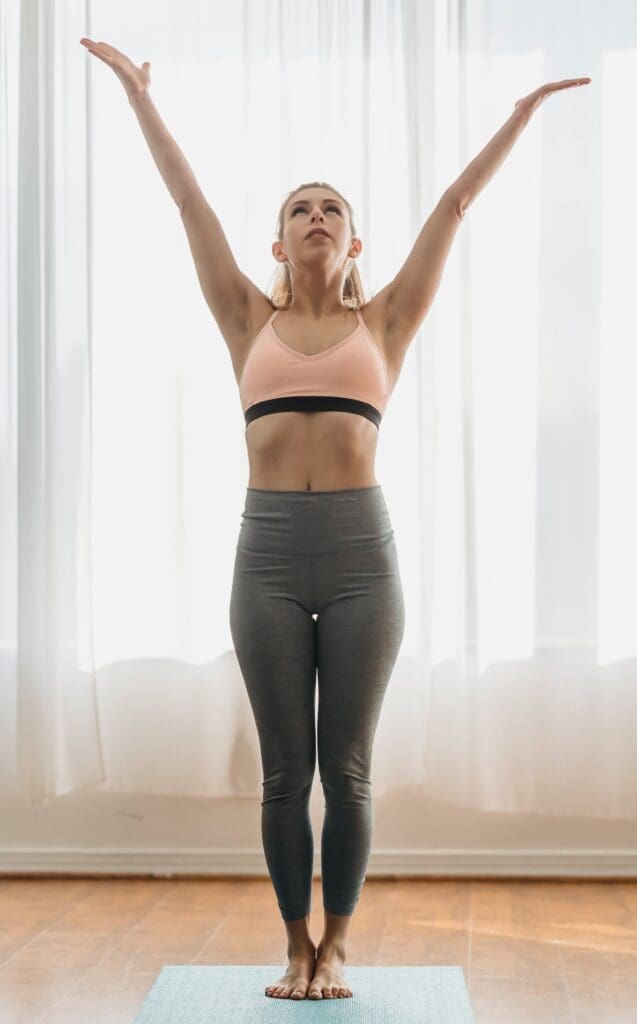
Mountain Pose, also known as Tadasana, is a basic standing pose and the foundation for all other standing yoga poses.
It may appear simple, but it promotes posture, balance, and calm. As you stand tall, ground your feet, lengthen your spine, and align your head, neck, and spine, you might find a sense of stability and tranquility.
Downward-Facing Dog (Adho Mukha Svanasana)
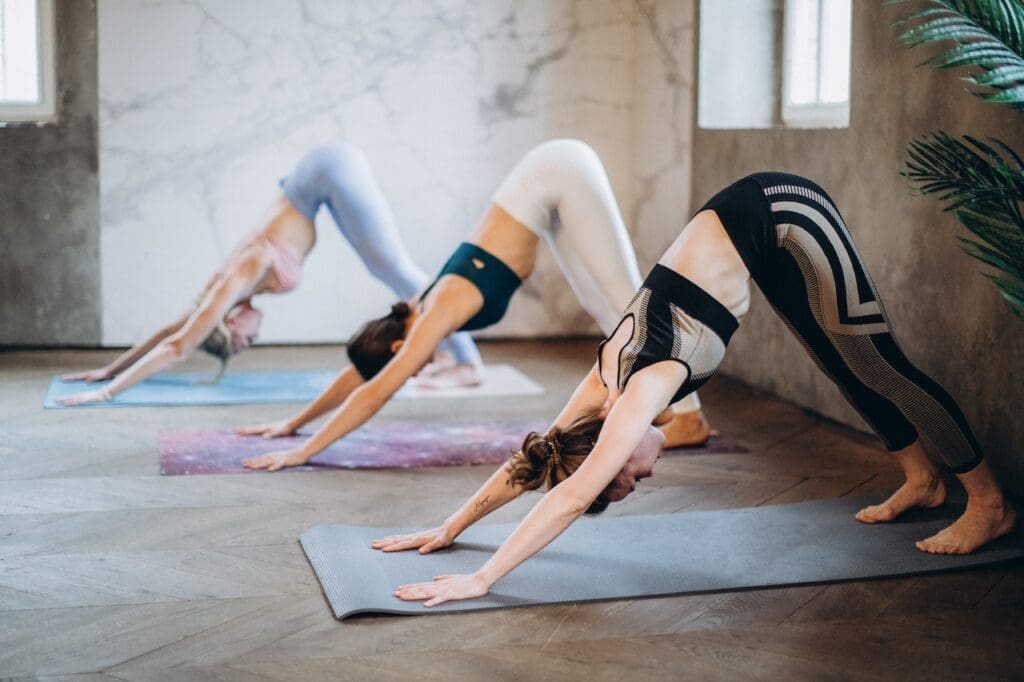
Downward-Facing Dog is a pivotal pose in many yoga styles. It stretches and strengthens the entire body, and it’s often used as a transition pose or a rest pose. To do this pose, you start on your hands and knees, then lift your hips toward the ceiling, forming an upside-down “V” shape. You’ll feel a stretch along your hamstrings and shoulders as you press your heels toward the floor and your chest toward your thighs.
Warrior II (Virabhadrasana II)
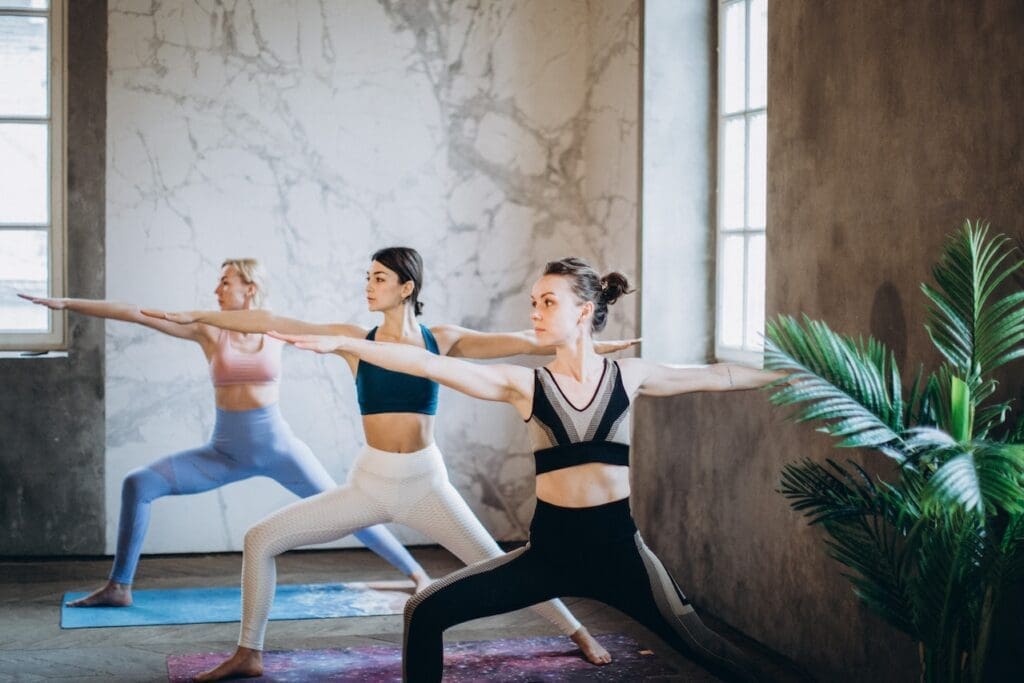
Warrior II is a standing pose that builds strength in the legs and core, while also stretching the hips and inner thighs. In this pose, one foot is positioned forward, with the knee bent at a 90-degree angle. The other leg is extended behind, with the foot angled slightly outwards. The arms extend out in line with the shoulders, with the gaze directed forward over the front hand. Warrior II embodies the spirit of a warrior and can instill a sense of power and confidence.
Tree Pose (Vrksasana)

Tree pose is a standing balance pose that helps to improve focus and body awareness. In Tree Pose, you stand on one leg, with the other foot resting on the standing leg’s ankle, calf, or inner thigh. The hands can be folded in prayer position at the chest, or extended overhead. It’s a beautiful pose to practice mindfulness as you focus on maintaining balance.
Corpse Pose (Savasana)

Despite its ominous name, Corpse Pose, or Savasana, is a deeply restorative pose that usually concludes every yoga session. In Savasana, practitioners lie flat on their backs, allowing their bodies to relax and integrate the benefits of their practice. It’s a perfect moment to practice mindfulness, focusing on the breath and letting go of any remaining tension.
Starting Your Yoga Journey
If you’re new to yoga, starting your journey can feel overwhelming. But remember, every yogi started somewhere. Be patient with yourself, listen to your body, and take things at your own pace.
If you’re unsure where to start, consider joining a beginner’s yoga class. Many yoga studios offer these, and they provide a safe, supportive environment to learn the basics. In these classes, you’ll be guided through basic poses and sequences, learn proper alignment, and become familiar with yoga’s breathing and relaxation techniques.
You can also practice yoga at home. There are countless online resources, including video classes, tutorials, and even live-streamed classes that you can follow from the comfort of your home. ere’s an overview of some common styles that you might encounter in a typical yoga class or in an online class, such as the ones offered by platforms like Yoga International. Remember, it’s not about how your pose looks, but how it feels. As you continue your practice, you’ll notice improvements not just in your physical strength and flexibility, but in your mental clarity and mindfulness as well.
Conclusion
In conclusion, the practice of yoga offers a holistic approach to health and well-being, combining physical postures, breath control, and mindfulness. Its benefits range from improved strength and flexibility to stress reduction and mental clarity. With a variety of styles, it offers something for everyone, no matter your fitness level or goals. Remember, the journey is personal and unique to each individual. The most important thing is to enjoy the process and honor your body’s abilities and needs. Whether you practice in a studio or at home, yoga can be a beautiful and transformative journey of self-discovery, self-compassion, and wellness.
Embarking on your yoga journey may seem challenging at first, but once you step onto the mat, it can become a lifelong source of peace, wellness, and self-understanding. With each breath, each pose, and each moment of stillness, you will find yourself becoming more attuned to your body and your mind, experiencing the world through a more mindful and compassionate lens. As you deepen your practice, you’ll uncover layers of strength, resilience, and peace within you that you never knew you had.
This guide is merely the start of your exploration into the world of yoga. With consistent practice and an open mind, you’ll discover that yoga is more than a form of exercise—it’s a lifestyle, a philosophy, a way of being that transcends the mat and permeates every aspect of your life. So unroll your mat, take a deep breath, and step into the transformative world of yoga.
For more related content, Sign up here
FAQs
What is yoga and what does it do?
Yoga is a holistic practice that originated in ancient India. It combines physical postures (asanas), breath control (pranayama), meditation, and ethical principles to promote physical and mental well-being. Yoga helps improve flexibility, strength, balance, and mindfulness. It also reduces stress, enhances relaxation, and promotes overall health.
What type of yoga is best for beginners?
For beginners, Hatha yoga is often recommended. Hatha yoga focuses on basic postures and breathing techniques, making it accessible to individuals of all fitness levels. It emphasizes proper alignment and provides a foundation for exploring other yoga styles in the future.
How to start yoga when overweight?
Starting yoga when overweight can be done by following these tips:
- Choose a gentle yoga style: Look for classes or videos that focus on gentle or beginner-friendly practices.
- Modify poses: Use props like blocks or straps to support your body and modify poses to suit your comfort level.
- Listen to your body: Take breaks when needed, and pay attention to how your body feels during the practice.
- Practice self-compassion: Remember that yoga is a journey, and progress is made over time. Be patient and kind to yourself.
How often should you do yoga?
The frequency of yoga practice depends on individual preferences, goals, and availability. Starting with 2-3 sessions per week is a good baseline for beginners. As you become more comfortable and experienced, gradually increase the frequency to 4-5 times per week or even daily if desired. Consistency is key to experiencing the benefits of yoga.
What is the fastest way to lose weight with yoga?
While yoga alone may not be considered the fastest way to lose weight, it can be a valuable component of a weight loss journey. Combining regular yoga practice with a balanced diet and other forms of exercise, such as cardiovascular activities and strength training, can help create a calorie deficit and support healthy weight loss. It is essential to focus on overall lifestyle changes rather than solely relying on yoga for weight loss.
Can you lose weight with beginner yoga?
Yes, practicing beginner yoga can contribute to weight loss. Yoga helps improve physical fitness, increase body awareness, and enhance mindfulness around eating habits. Additionally, certain yoga styles, such as Vinyasa or Power Yoga, can provide a more vigorous workout, aiding in calorie burn. However, sustainable weight loss requires a combination of regular physical activity, a balanced diet, and lifestyle modifications.

